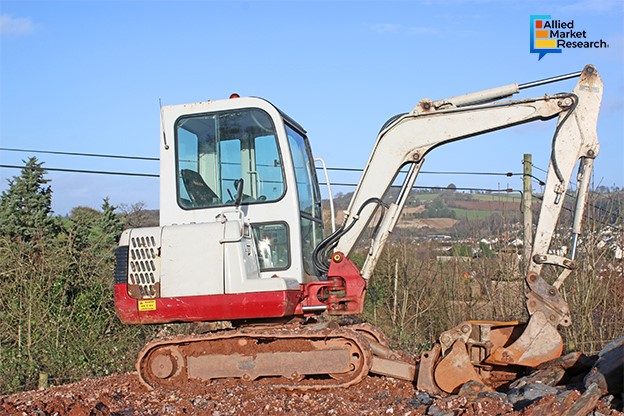Analyzing the Top Innovations and Developments in the Electric Construction and Agriculture Equipment Industry

28 May
2024
Key takeaways:
- Introduction
- Recent trends in the electric construction and agriculture equipment industry
- The growing use of advanced technologies in the construction and agriculture sectors
As per one study, the global construction sector accounts for 23% of the total air pollution, 50% of the landfill waste, and 40% of the total water pollution. Another study that focused on the negative environmental impact of the agriculture sector highlighted that the sector contributes to around 25% of the total greenhouse gas emissions and 78% of the oceanic and freshwater eutrophication. Thus, it is pretty evident that both these sectors are some of the biggest polluters and emitters of greenhouse gases.
To tackle this issue, intergovernmental organizations like the United Nations have brought several countries together to sign agreements to bring down the carbon footprint of these sectors. As part of these agreements, many countries have mandated the use of electric construction and agriculture equipment instead of conventional diesel-run machinery to reduce carbon emissions.
Electrification of the construction and agriculture sectors transforming the global economy
The growing environmental concerns across the globe have been a major driver behind the rise of the electric construction and agriculture equipment industry. However, there are many other factors responsible for the growth of the landscape; technological advancements in battery technology have played a crucial role behind the increased adoption of electric equipment by builders and farmers for their operations. Most research and innovations in the field of battery technology are centered around improving the charging times and enhancing their battery life. Furthermore, technology companies are developing solutions that use renewable energy sources for charging batteries so as to make the entire supply chain environmentally sustainable.
Many agricultures equipment manufacturers have developed electric tractors that significantly reduce the carbon emissions caused by farming operations. Recently, in August 2023, both New Holland and Case IH, two leading agricultural machinery companies, unveiled their electric tractors which significantly improve the productivity and efficiency of farming operations.
A major issue associated with traditional techniques employed in the construction and agriculture sectors is the huge amount of noise pollution they cause. While this issue has largely been neglected, high noise pollution levels have been known to cause stress-related illnesses, sleep disruption, high blood pressure, decreased productivity, and hearing loss. The problem of noise pollution is much more grave in urban areas; however, in the past few decades, noise pollution levels have consistently increased in rural areas also. Electric construction and agriculture equipment, due to their inherent working principle, cause minimal noise and hence bring down pollution levels drastically.
Integration of advanced technologies with electric construction and agriculture equipment
Apart from the advantages mentioned above, one major benefit of the shift toward electric equipment is that the integration of advanced technologies like telematics, geospatial data capturing, Artificial Intelligence, etc., becomes possible. For example, many new agriculture machines have come up with modern technologies for determining the health of livestock and real-time monitoring of crop health. Similarly, technologies like big data and data analytics have improved the capabilities of construction equipment as optimization of supply chains has become possible due to continuous tracking and sensing functionalities. The incorporation of Artificial Intelligence, smart electronics, and sensing devices in electric construction and agriculture equipment helps in predictive maintenance and reduces downtime, thereby significantly increasing the productivity of these sectors.
Recently, in April 2024, Volvo CE, a machine industry company, announced that it would launch its largest construction excavator in Japan by the end of the second quarter of 2024. Volvo has already launched the ECR25 Electric compact excavator and the L25 Electric compact wheel loader, two of its most powerful construction machines in Japan. EC230 Electric excavator which will be launched by May-June 2024, is considered by many as one of the most advanced and sophisticated construction equipment in the industry and will help the company to increase its footprint in the Asia-Pacific region.
To summarize, the growth of environmental awareness across the globe has played a major role in the expansion of the electric construction and agriculture equipment industry. Moreover, technological advancements and the launch of innovative products by leading construction and agriculture equipment manufacturers have helped the landscape flourish.
For a comprehensive study on the different growth drivers and investment opportunities in the industry, feel free to contact us.

Akhilesh Prabhugaonkar
Author's Bio- Akhilesh Prabhugaonkar holds a bachelor’s degree in Electronics Engineering from the reputed Vishwakarma Institute of Technology. He has a special interest in the fields of forensics, world history, international relations and foreign policy, sports, agriculture, astronomy, security, and oceanography. An ardent bibliophile and melophile, Akhilesh loves to write on topics of his interest and various other societal issues. This love for writing made him enter the professional world of content writing and pursue his career in this direction.
Construction Dumpers: Key Machinery Revolutionizing Construction and Renovation Projects Globally
Avenue: Entire Library membership of Allied Market Research Reports at your disposal
- Avenue is an innovative subscription-based online report database.
- Avail an online access to the entire library of syndicated reports on more than 2,000 niche industries and company profiles on more than 12,000 firms across 11 domains.
- A cost-effective model tailored for entrepreneurs, investors, and students & researchers at universities.
- Request customizations, suggest new reports, and avail analyst support as per your requirements.
- Get an access to the library of reports at any time from any device and anywhere.
Related Post
-
How are Submarine Cables Transforming Global Connectivity with Enhanced User Experience?
-
How Integrating Advanced AC Electric Motors Does Optimize Equipment Potential?
-
How Industrial Fasteners Are Adapting to New Engineering Needs
-
Analyzing the Growing Popularity of Porcelain Insulators in the Power Generation Sector
-
Understanding the Role of LNG Engines in Transport and Shipping
-
Precision Tools in Eye Surgery: Understanding Ophthalmic Knives
-
Smart Tools in Mining: How Automation Is Changing Daily Operations








